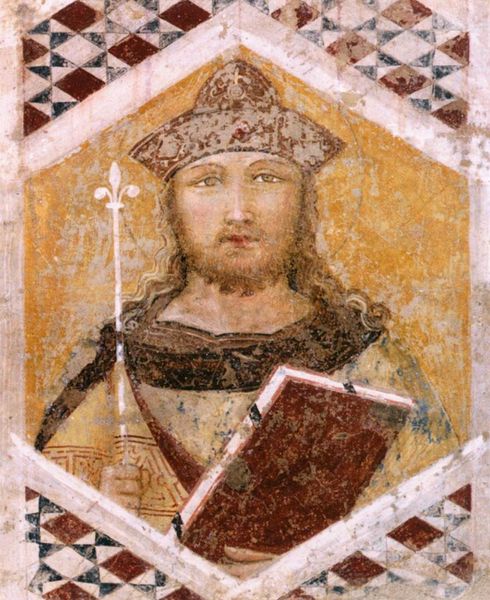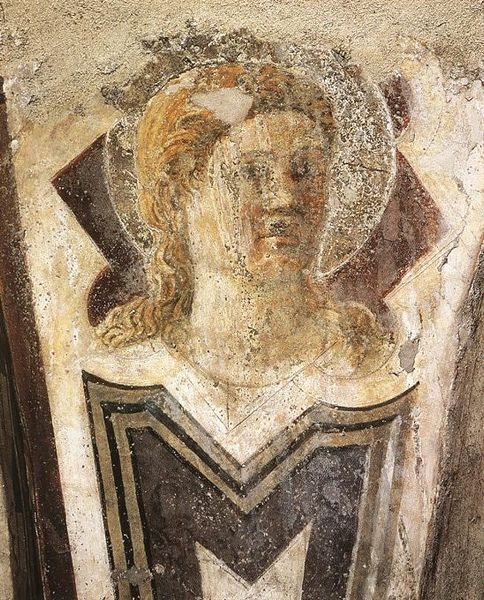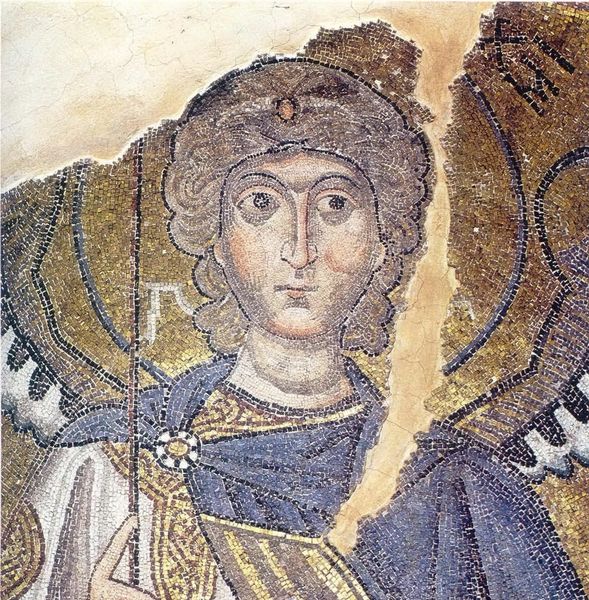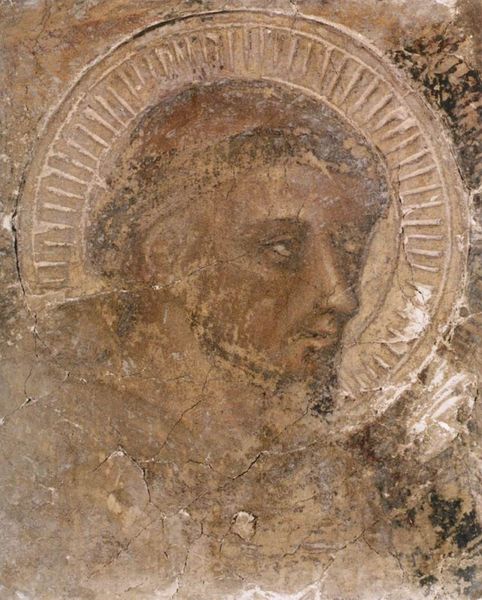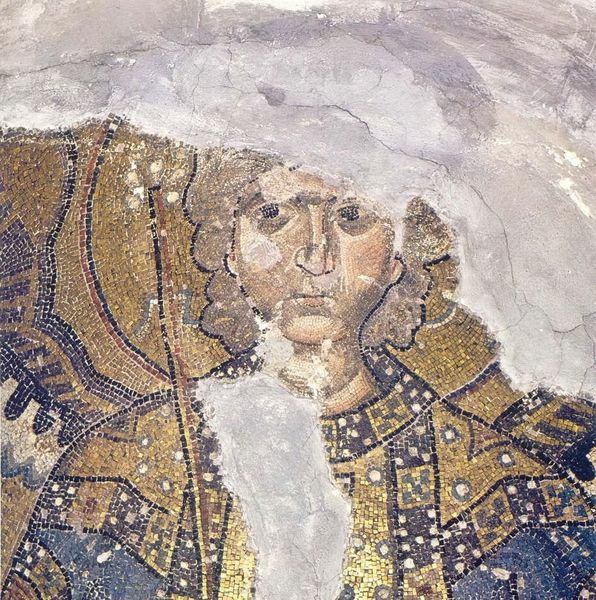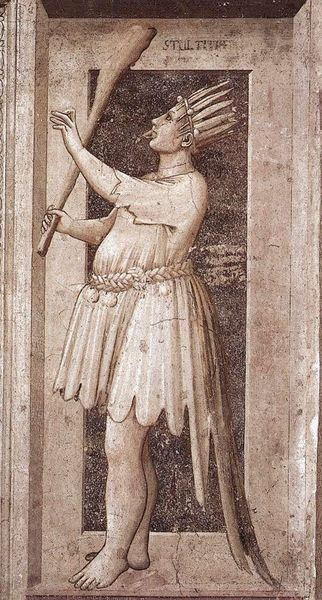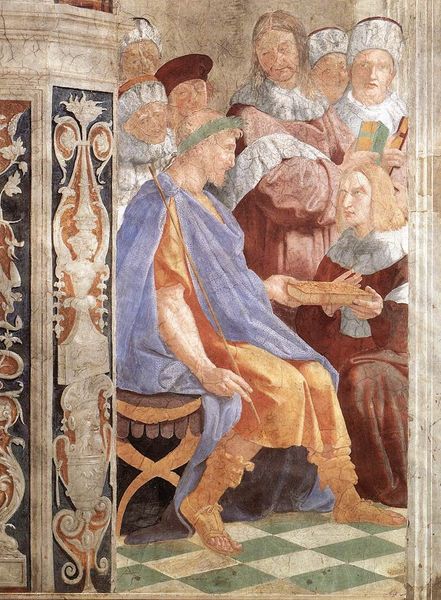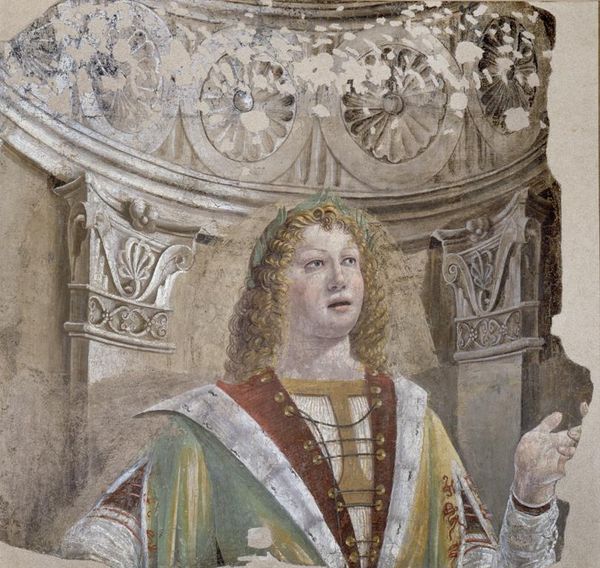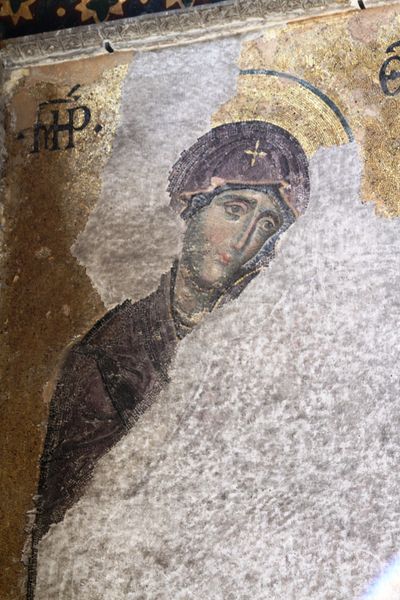
painting, fresco
#
portrait
#
painting
#
fresco
#
oil painting
#
christianity
#
painting art
#
history-painting
#
academic-art
#
italian-renaissance
Dimensions: 130 x 105 cm
Copyright: Public domain
Curator: Well, what strikes you first about this arresting image, our featured fresco by Piero della Francesca? The artwork dates back to about 1455, and depicts Saint Julian. Editor: He seems…haunted, almost apprehensive. Is that the effect of the green-tinged backdrop pushing his pale face forward, or something deeper in his gaze? There is a feeling of impending doom in that upward stare. Curator: Indeed! Julian's legend isn't exactly light reading. Unknowingly, he killed his own parents after a prophecy foretold he would. That certainly marks the collective cultural memory we have about this figure. This portrait is not merely physical likeness, but loaded with meaning. The simple, almost flat halo intensifies his anguish rather than suggesting beatific peace. Editor: Yes! You can clearly see that it lacks decorative flourish that you often find in hagiography. Even his red robe, usually indicative of martyrdom or intense faith, appears weighty and almost oppressive. Tell me, does his gaze speak to something of contrition, perhaps? Or more than simple regret? Curator: I think there is more. It goes beyond simple repentance into this profound sense of dislocation from everything, you know? From himself. He’s suspended between this mortal coil, this accidental violence, and… well, saintly status. His life is just one big paradox! It's like Piero, capturing that very moment where Julian comprehends that very gap, uses that visual motif to speak about something bigger and universal about redemption after immense sin. Editor: Piero is rather skilled at holding his figures in poised detachment. Is it just me, or is there also the sense of inevitability baked into that slightly pursed lip? One wonders what's truly contained, hidden just behind those very expressive eyes. Curator: Absolutely. There’s an inherent acceptance. The image serves as a meditation. A pause to think and digest that suffering, atonement, saintliness and self awareness can and do co-exist in people. Editor: It makes you question easy answers. And as we ponder it here today, the art, through image, still manages to force those very interesting philosophical discussions and reflections even now.
Comments
No comments
Be the first to comment and join the conversation on the ultimate creative platform.
